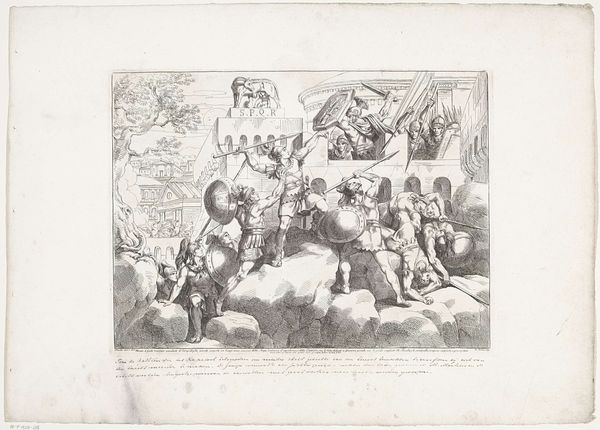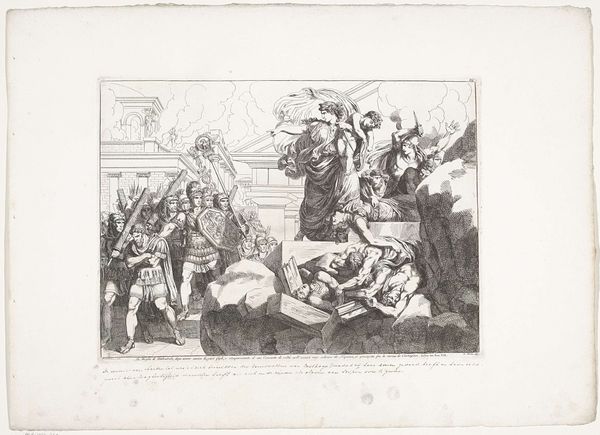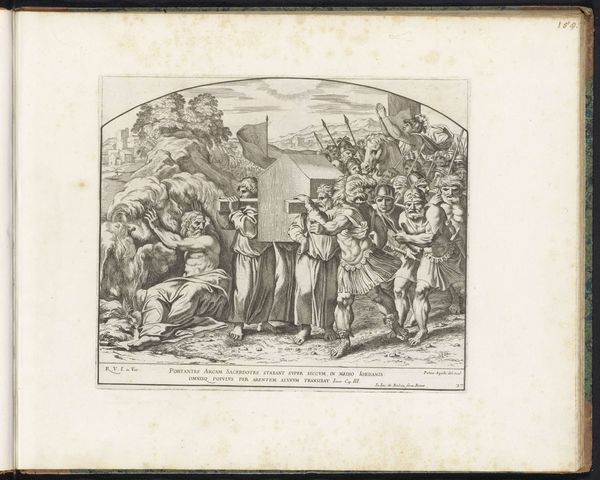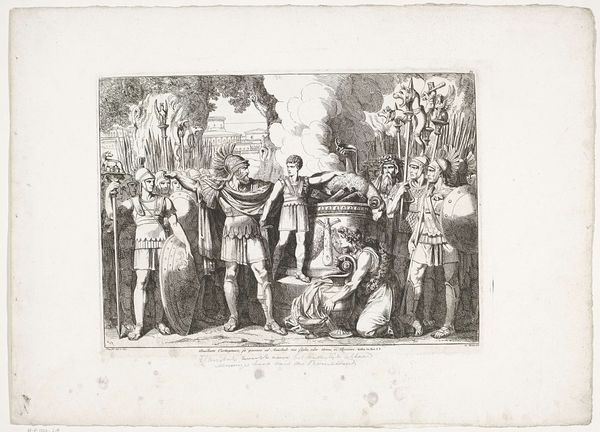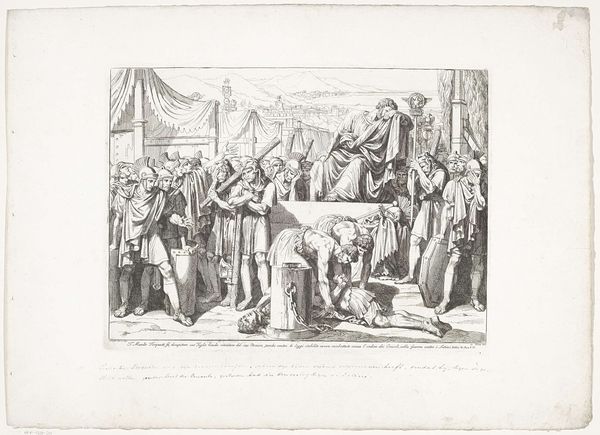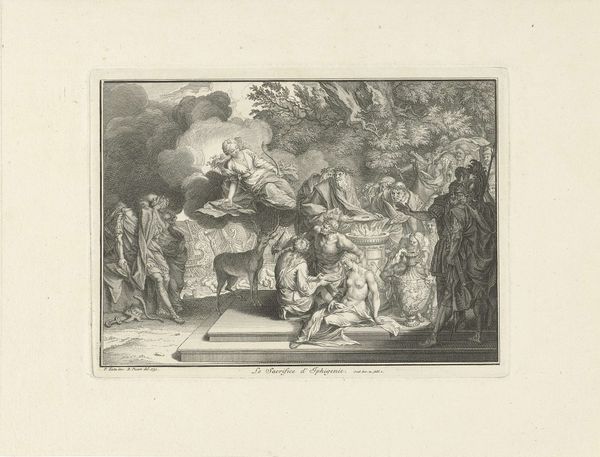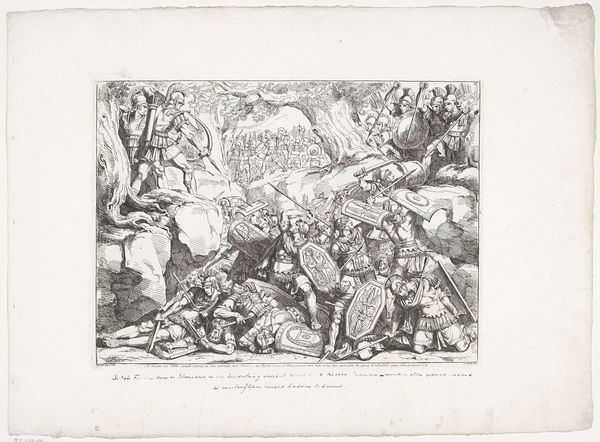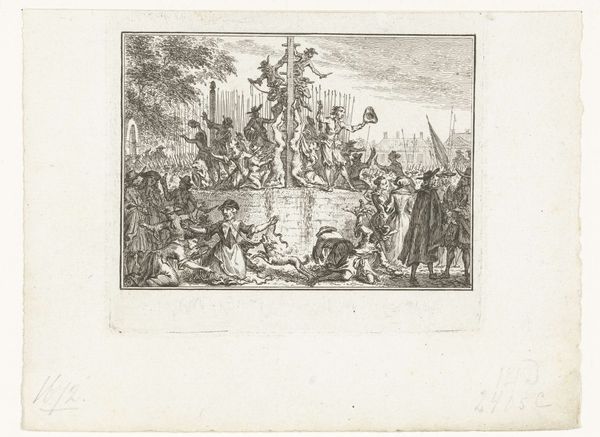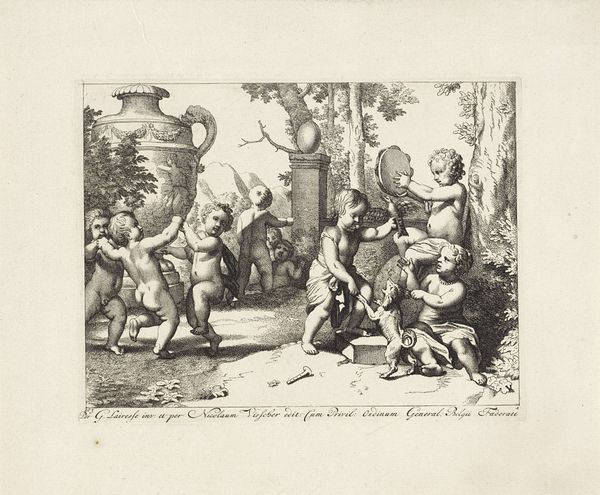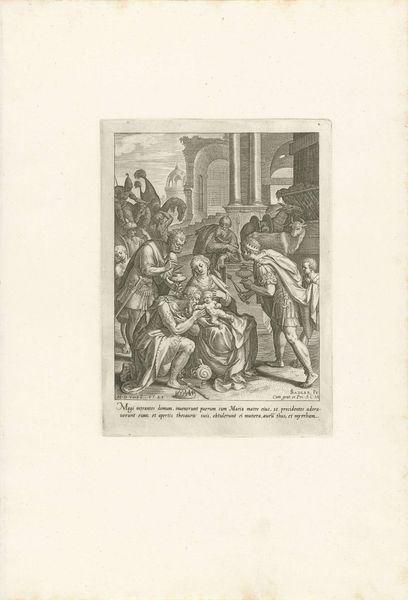
print, engraving
#
toned paper
#
light pencil work
#
narrative-art
# print
#
pencil sketch
#
old engraving style
#
classical-realism
#
figuration
#
personal sketchbook
#
ink drawing experimentation
#
romanticism
#
pen-ink sketch
#
line
#
sketchbook drawing
#
history-painting
#
sketchbook art
#
engraving
#
pencil art
Dimensions: height 314 mm, width 426 mm
Copyright: Rijks Museum: Open Domain
Bartolomeo Pinelli made this print of ‘Stervende Calpurnius Flamma gevonden’ or ‘The Dying Calpurnius Flamma Found’ using etching. It is an image that conveys the glory and drama of ancient Rome. Made in the early 19th century, this artwork evokes the visual codes of heroism and sacrifice, themes that were very much in vogue at the time. Pinelli’s Rome was one gripped by a renewed sense of nationalism and interest in its classical past. This interest was cultivated by museums and academies that both preserved antiquities and promoted the aesthetic values of antiquity. Calpurnius Flamma was a Roman soldier who volunteered to defend a narrow path against the invading Samnites, thus allowing the Roman army to escape. Pinelli’s work thus participates in the fashion for Neoclassicism that idealized antiquity. A deeper understanding of this work can be achieved through studying the history of museums, the rise of nationalism, and the politics of imagery in Pinelli’s time.
Comments
No comments
Be the first to comment and join the conversation on the ultimate creative platform.

